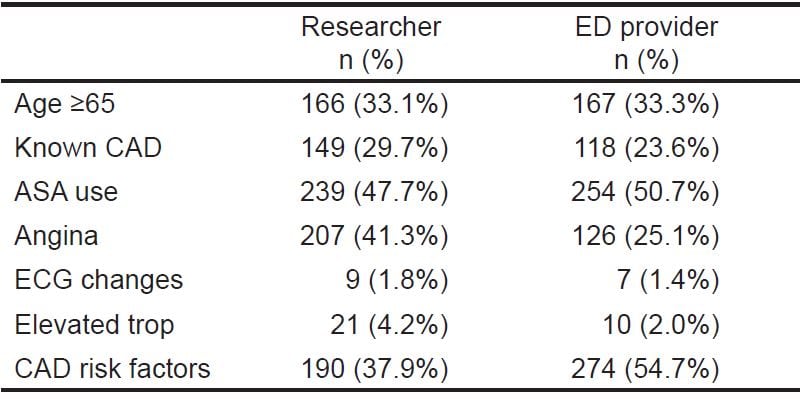

Results from an international trial of 41,021 patients. Predictors of 30-day mortality in the era of reperfusion for acute myocardial infarction. Application of the TIMI risk score for ST-elevation MI in the National Registry of Myocardial Infarction 3. Validation of the thrombolysis in myocardial infarction (TIMI) risk index for predicting early mortality in a population-based cohort of STEMI and non-STEMI patients. The prognostic importance of left ventricular function in patients with ST-segment elevation myocardial infarction: The HORIZONS-AMI trial. An Asian validation of the TIMI risk score for ST-segment elevation myocardial infarction. Selvarajah S, Fong AY, Selvaraj G, Haniff J, Uiterwaal CS, Bots ML. Association of creatinine and creatinine clearance on presentation in acute myocardial infarction with subsequent mortality. Do GRACE (Global Registry of Acute Coronary events) risk scores still maintain their performance for predicting mortality in the era of contemporary management of acute coronary syndromes? Am Heart J. TIMI risk score for ST-elevation myocardial infarction: a convinient, bedside, clinical score for risk assessment at presentation: an intravenous nPA for treatment of infarcting myocardium early II trial substudy. Morrow D, Antman E, Charlesworth A, et al. Validasi skor thrombolysis in myocardial infarction (TIMI) dalam memprediksi mortalitas pasien sindrom koroner akut di Indonesia. Karakteristik sindrom koroner akut dengan edema paru kardiogenik di ICCU RS Cipto Mangunkusumo dan faktor-faktor yang berhubungan. The effect of admission creatinine levels on one-year mortality in acute myocardial infarction. the Killip class and GFR with satisfactory calibration and discrimination rate.Ĭakar MA, Gunduz H, Vatan MB, Kocayigit I, Akdemir R. Conclusion: There are two new score variables that can be used as predictors of 30-day mortality risks for STEMI patients, i.e. It was considered moderate if the total score was between 2.5 and 3.5 (23.2%) and low if the total score was 0.05) and discrimination (AUC 0.816 (0.756-0.875 CI 95%). The risk was considered high when the total score was >3.5 (46.5%). Thirty-day mortality risk stratification for STEMI patient included high, moderate and low risks. the Killip class II to IV and GFR with a range of total score between 0 and 4.6. Results: bivariate and multivariate analyses showed that only two variables in the new score system model were statistically significant, i.e. Calibration and discrimination features of the new model were assessed using Hosmer-Lemeshow test and area under receiver operating characteristic curve (AUC). Subsequently, a new scoring system was developed to predict 30-day mortality rate in STEMI patients. Data were obtained from medical records and analyzed with bivariate and multivariate method using Cox’s Proportional Hazard Regression Model. Sample size was calculated using the rule of thumbs formula. Methods: a retrospective cohort study was conducted in 487 STEMI patients who were hospitalized at RSUPN Cipto Mangunkusumo between 20. Background: to identify other factors other than the TIMI scores that can be used as predictors of 30-day mortality in STEMI patients by including variables of left ventricle ejection fraction (LVEF) and glomerulus filtration rate (GFR) at Cipto Mangunkusumo National Central General Hospital.


 0 kommentar(er)
0 kommentar(er)
